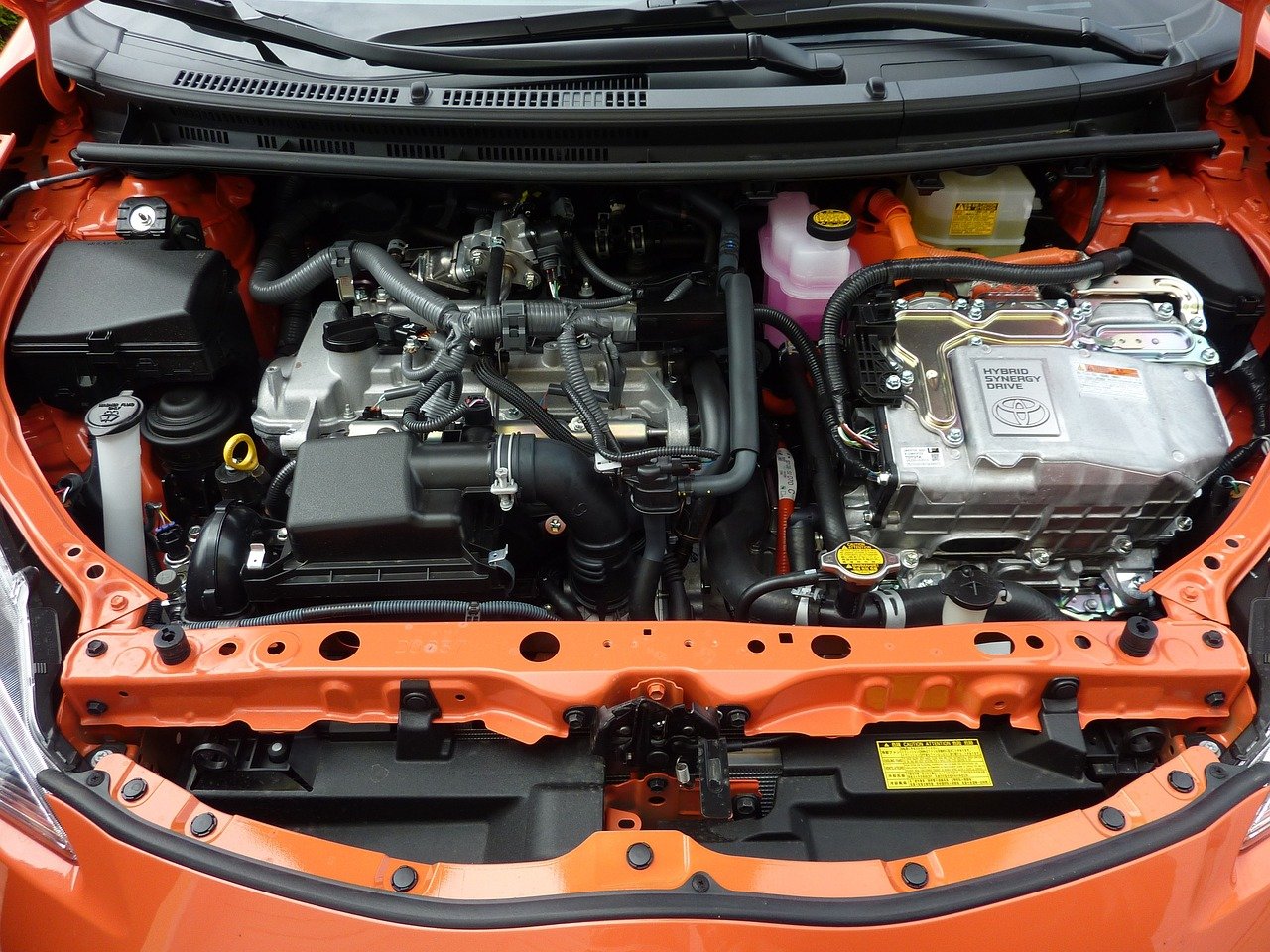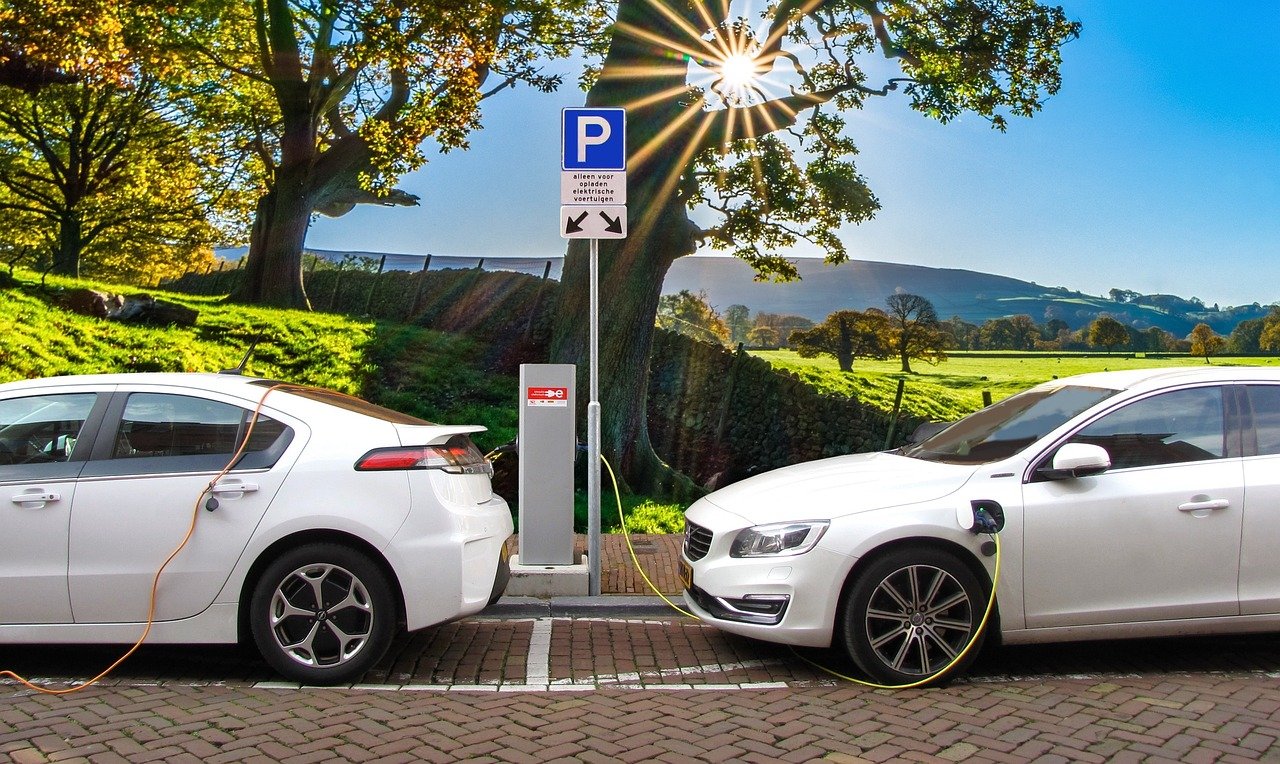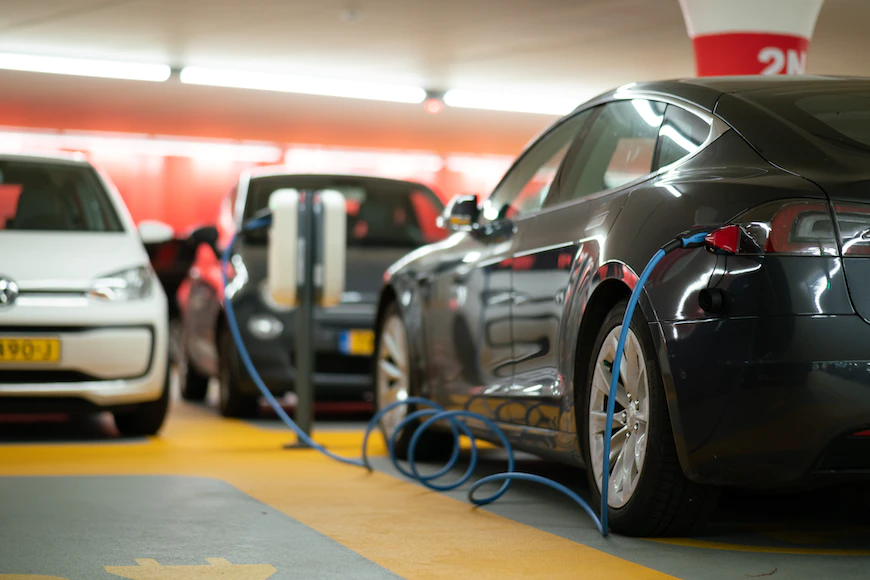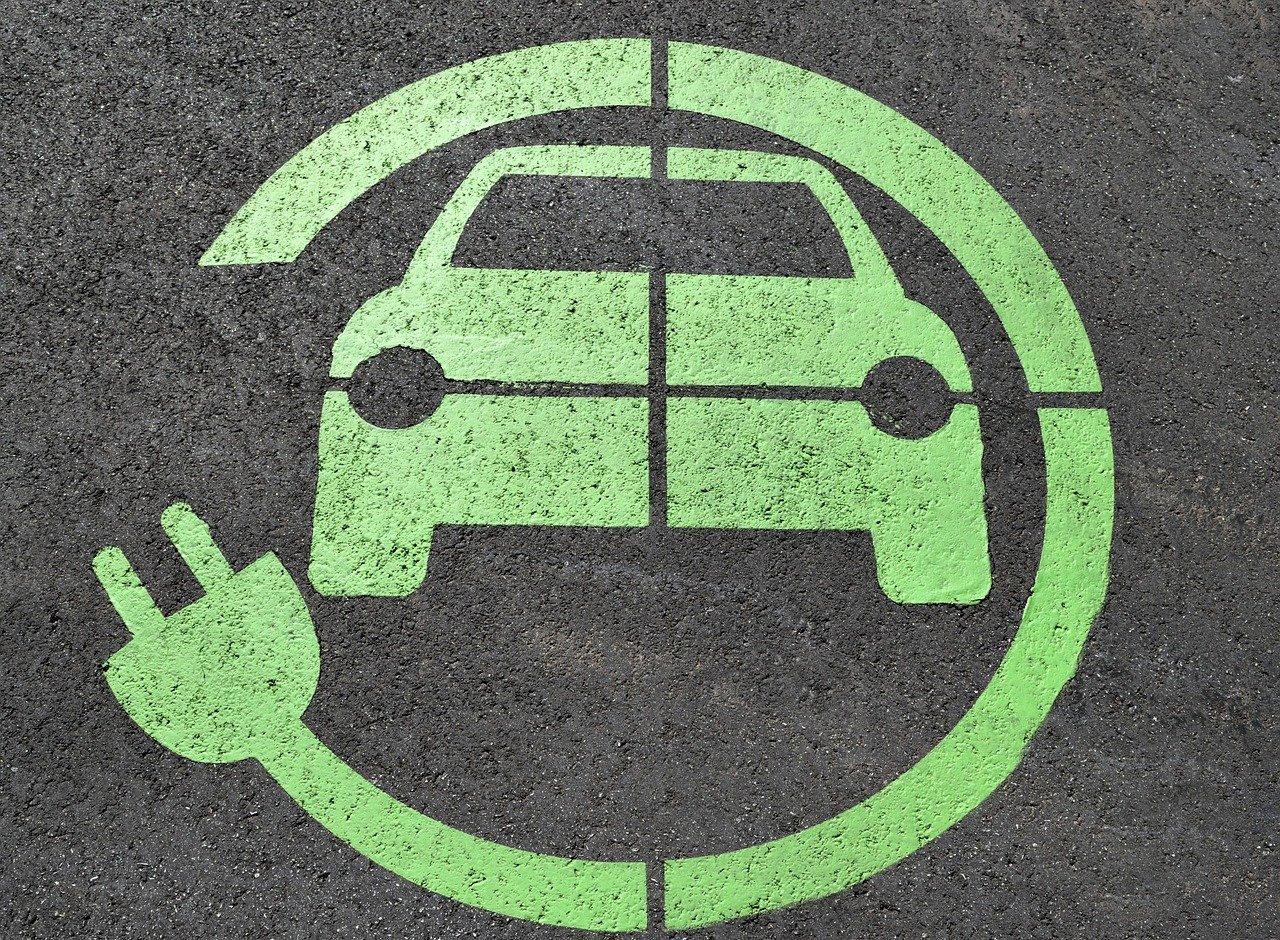Revolutionizing the automotive industry, electric cars are the future we've been waiting for. With groundbreaking technology and sustainable practices, they're changing the game for good.
Significant changes have occurred in the automobile industry in recent years, with the introduction of electric cars (EVs) at the front of this movement. Environmental friendliness, advancements in battery technology, and government subsidies have all contributed to the growth in EV popularity.
Electric vehicles (EVs) are powered entirely by electricity and often have rechargeable batteries. As a result, these automobiles could lessen the world's reliance on fossil fuels and cut greenhouse gas emissions.
Electric vehicles' significance to the car industry is huge. Electric vehicles (EVs) are behind a transportation revolution and provide a green replacement for conventional gasoline-powered automobiles.
The push for EVs originates from the environmental need to lessen our impact on the planet.
Although the first electric car was developed in the middle of the nineteenth century, its popularity took off in the late twentieth century. It's no secret that advances in
battery technology and government subsidies have done wonders for the electric vehicle sector.
The worldwide market for electric vehicles (EVs) has expanded at a pace never seen before in recent years. Almost ten million electric vehicles were on the road in 2020, and it is projected to more than double, to 145 million, by 2030. Improvements in technology, enticing policies from governments, and rising consumer demand are the primary forces propelling the industry forward.
This article will examine the developments in technology and industry that will impact the state of electric vehicles in 2023. Battery technologies, charging infrastructure, driverless vehicles, and more will all be discussed. The goal of this essay is to provide readers with a thorough overview of the existing EV industry and its potential future.
ELECTRIC VEHICLE TECHNOLOGIES
Electric vehicles (EVs) are becoming increasingly popular as the world advances toward cleaner energy sources and sustainable modes of transportation. However, technological advancements that support the electric vehicle industry are crucial to its success. The most crucial EV technologies discussed in this section include battery technology, electric motors, and vehicle-to-grid (V2G) technology.
A. Battery Technology

Photo: Photoman
The battery technology of electric cars depends entirely on the battery. How far and how long it takes to charge an electric vehicle depends on the battery. Advances in battery technology have led to greater power and efficiency. For instance, solid-state batteries offer a higher energy density and a shorter charging time. Graphene batteries are another promising technology.
Lithium-ion batteries remain the most widely used EV technology despite these advancements. This is because these batteries provide a good balance of energy density, cost, and safety. However, there is still room for development in the quest for safer, longer-lasting, and more efficient
lithium-ion batteries.
B. Electric motors
The electric motor is another crucial component of EVs. There are several varieties of electric motors, including those that use permanent magnets, induction, or switching reluctance. Permanent magnet motors are the most common EV option due to their high power density and efficiency. As compared to synchronous motors, induction motors are more straightforward, more reliable, and produce less power per unit area. While rare, switching reluctance motors provide high torque density and durability.
C. V2G (vehicle-to-grid) technology
The V2G technology is a cutting-edge concept that allows electric vehicles to produce and consume energy for the grid. The V2G technology enables electric cars to feed back extra energy to the grid during peak demand, easing the burden on the grid and eliminating the need for fossil fuel power plants. In addition, this technology, which reduces energy costs and enhances grid stability, enables the incorporation of renewable energy sources.
EV technologies, including battery technology, electric motors, and vehicle-to-ground communication, are shaping the future of transportation. As these technologies advance, EVs will become more efficient, long-lasting, and eco-friendly. Therefore, the end of electric mobility depends on the technologies discussed in this section.
CHARGING INFRASTRUCTURE
EVs are the future of transportation, but their broad acceptance depends on the availability of charging infrastructure. The charging infrastructure for electric vehicles is now expanding quickly, and new technological advancements are continually being developed to increase charging speed, dependability, and convenience. This article will cover the history of electric vehicle charging infrastructure, the most recent advancements in charging technology, and the government incentives fostering its growth.

Photo: joenomias
The infrastructure for charging electric vehicles has advanced significantly in recent years. For example, only slow AC charging at home or authorized public charging stations were available in the early days of electric vehicles. However, the charging infrastructure has evolved to encompass various charging rates, from slow AC charging to fast DC charging, which can charge an EV in as little as 30 minutes.
More than 100,000 public charging stations are already in the United States, which is continuously increasing. Government incentives, corporate investment, and consumer demand are just a few variables that have contributed to this growth.
The need for quicker, more dependable charging infrastructure is growing as the demand for electric vehicles does. As a result, companies are on new charging methods that can quickly assess an EV.
Wireless charging, also known as inductive charging, is a promising new technology that enables an electric vehicle to be charged by merely parking over a charging pad. Without wires or plugs, the charging pad transfers electricity to the EV's battery by electromagnetic induction.
Another new technology that can potentially change how EV charging is done completely is ultra-fast charging. An electric vehicle may be charged in as little as 10 minutes with ultra-fast charging, about the same time it takes to fill a petrol tank. Advances in battery technology and charging infrastructure have made this technology conceivable, and it will likely become more commonly accessible shortly.
Governments all over the globe are providing incentives for the installation of EV charging infrastructure to support the growth of electric vehicles. These incentives offset the cost of installing charging stations, including tax credits, rebates, and grants.
● Tax incentives
Installing electric vehicle charging stations in the United States is eligible for a 30% federal tax credit from the government. This credit may offset the cost of purchasing and installing charging infrastructure for people and businesses.
● Rebates
For the installation of EV charging stations, several states and municipal governments also provide rebates. Depending on the location and kind of charging station, these rebates may cover installing and purchasing the charging equipment.
●
Grants
Lastly, some governments provide grants to support the installation of EV charging infrastructure. These grants are often given to businesses or organizations installing many charging stations to cover some of the installation costs.
The availability and accessibility of charging infrastructure are critical aspects of adopting electric cars. With new technology advancements being developed to increase charging speed, reliability, and comfort, the present charging infrastructure for EVs is expanding quickly. Moreover, the future of EV charging infrastructure growth is promising, with government incentives backing it.
AUTONOMOUS DRIVING
Autonomous driving technology has recently been a hot topic in the car business, and it can potentially revolutionize how we drive. Autonomous driving technology, commonly referred to as self-driving vehicle technology, is a system that enables a vehicle to operate without the need for human input. With the use of this technology, accidents can be significantly reduced, and road safety can be improved.
A vehicle may drive itself down the road without any human interaction thanks to autonomous driving technology, which employs several sensors, cameras, and algorithms. Collectively, these technologies can recognize and respond to dangers, traffic, and road conditions—basic human assistance systems up to fully autonomous vehicles that don't need human input.
Autonomous driving technology has advanced significantly over the last several years. As self-driving cars become more common, several manufacturers are working to develop fully autonomous vehicles. Semi-autonomous cars are now on the market and have features like adaptive cruise control, lane-keeping assistance, and automatic emergency braking.
The advancement of autonomous driving technology has been made possible by AI and machine learning. These technologies, which let vehicles learn from and adapt to different driving situations, make them more trustworthy and safe on the road.
The development of autonomous driving technology has significantly influenced the EV industry. Electric vehicles are inherently more efficient and require less maintenance than internal combustion engines. As a result, autonomous driving technology may reduce EV operating costs.
With autonomous driving technology, range anxiety may be reduced, a typical problem for EV users. In addition, self-driving cars may be programmed to seek out charging stations when the battery is low, and they can also be programmed to travel the most efficient routes.
In conclusion, autonomous driving technology has the potential to revolutionize the way we drive, which has a big influence on the EV industry. Travel will be simpler, safer, and more efficient as more self-driving cars hit the road.
CONSUMER ADOPTION
Consumer adoption continues to be a key aspect in the success of the electric vehicle (EV) sector as it continues to grow. Although significant progress has been made in the adoption of EVs, challenges must be addressed to increase adoption rates. In this part, we'll look at the present level of EV consumer adoption, the factors that affect consumer choices, and strategies to increase EV adoption.
With more and more people realizing the benefits of driving electric, consumer adoption of EVs has been gradually rising in recent years. Notwithstanding the effects of the COVID-19 epidemic, the International Energy Agency reports that worldwide EV sales hit 3.1 million in 2020. Yet, EVs still make up a modest fraction of all vehicles on the road, showing that consumer adoption growth is possible.
Several factors influence consumer choices about electric vehicles. Range anxiety, or the worry that an electric vehicle's battery would die while driving, is a significant obstacle to adoption. Those who often travel long distances or reside in places with limited access to charging infrastructure should be especially concerned about this. In addition, EVs may cost more than conventional gas-powered vehicles, which is another consideration. Another factor that consumers take into account is the accessibility of charging infrastructure.
Several strategies may be used to increase consumer adoption of electric vehicles. First, the cost of electric vehicles may be reduced via government subsidies, tax credits, and other initiatives. This may make EVs more accessible to consumers and encourage more people to switch. Expanding the charging infrastructure is another tactic that might make it simpler for drivers of electric vehicles (EVs) to recharge their vehicles while on the road. Last, lowering the stigma associated with EVs and raising people's knowledge of them may assist in removing obstacles to their widespread adoption. More people may be persuaded to switch to electricity by giving consumers accurate information about the benefits of EVs and resolving their worries.
In conclusion, consumer adoption of EVs continues to be a key component in the industry's growth. Although there are challenges to be addressed, like range anxiety and the cost of EVs, there are also chances to grow. As a result, the EV industry may continue to grow and play a significant part in the future of transportation by implementing strategies to increase adoption rates, such as decreasing prices, improving charging infrastructure, and raising awareness
SUSTAINABILITY
As the world moves toward more sustainable practices in the automotive industry, electric vehicles (EVs) have emerged as a more sustainable alternative to traditional gasoline-powered autos. Sustainability in the electric vehicle industry includes the environmental impact of EV production and disposal and the reduction of greenhouse gas emissions. This section will explore the advantages of sustainable electric car technology advancements.
The environmental impact of EV production, use, and disposal is covered under sustainability in the EV industry. EVs can reduce greenhouse gas emissions and reliance on fossil fuels. Still, their production also requires energy, resources, and materials that may impact the environment. In addition, the disposal of EV batteries also raises questions about the ability to recycle or reuse the batteries and the potential for hazardous waste.
For the electric vehicle industry, one of the biggest problems is the proper disposal of batteries. Advances in battery technology have led to the development of recyclable batteries. These batteries are constructed from materials that may be easily dismantled and recycled. By recycling batteries, the environmental impact of the EV industry might be reduced.
EV production consumes a lot of energy and materials, and employing sustainable resources may assist in reducing the environmental impact. Sustainable materials, including recycled plastics and bio-based production, may produce EVs to reduce carbon emissions and waste. In addition, using sustainable materials may reduce reliance on non-renewable resources.
Sustainable electric vehicle technology has the following advantages:
● Greenhouse gas emissions reduction: Sustainable EV technology may assist in reducing greenhouse gas emissions by reducing the environmental impact of EV production and disposal.
● The use of sustainable batteries and the recycling of batteries may assist in the preservation of resources and reduce reliance on non-renewable materials.
● Recycling and utilizing sustainable materials might help you save money since they are often less expensive than their non-renewable equivalents.
In conclusion, sustainability is a key component in EV development, and advancements in sustainable EV technology can significantly reduce the industry's negative impacts on the environment. By using sustainable practices and producing recyclable batteries, the EV industry can reduce greenhouse gas emissions, save resources, and save money.
ENERGY STORAGE
Due to their environmental benefits, low operating costs, and
cutting-edge technology, electric vehicles (EVs) are quickly becoming the future of transportation. Energy storage, or the capacity of batteries to store and release electricity, is one of the most important features of EVs. In the EV sector, energy storage is crucial since it affects the range and effectiveness of EVs. The benefits of vehicle-to-home (V2H) and second-life batteries, two recent developments in energy storage technology, are covered in this article.
To store and release electricity, electric vehicles rely heavily on energy storage. Lithium-ion cells comprise the many sizes, forms, and configurations of electric vehicle batteries. Longer driving ranges and better vehicle performance have been made possible by electric car batteries' continually rising energy density. However, the need for more efficient and long-term energy storage solutions increases along with the demand for EVs.
During high demand or power disruptions, EVs may transmit electricity from their batteries to their houses using vehicle-to-home (V2H) technology. V2H technology is a novel kind of energy storage since it offers backup power and decreases reliance on the grid. In areas prone to natural catastrophes, where power outages are frequent, V2H technology is very helpful.
EV batteries that have outlived their useful life in vehicles but still have a lot of ability to store and discharge electricity are called second-life batteries. For stationary energy storage uses like residential energy storage or grid-scale energy storage, these batteries may be recycled. Since they extend the usable life of EV batteries and reduce waste, second-life batteries are affordable and ecological solutions for energy storage.
Energy storage technology has several benefits for the electric vehicle sector. V2H and second-life batteries are energy storage solutions that provide backup power, reduce reliance on the grid, and encourage sustainability.
V2H technology also enables EV owners to reduce their electricity costs by charging their vehicles during off-peak hours and utilizing the stored electricity during peak hours. In addition, since they extend the usable life of EV batteries and reduce the need for new battery manufacture, second-life batteries are cost-effective and reduce waste.
The future of the EV business depends heavily on energy storage technology. The most recent developments in energy storage technology, such as V2H and second-life batteries,
provide practical and long-term solutions for energy storage. However, more efficient and long- term energy storage solutions are required as the demand for electric vehicles rises.
SMART GRIDS
As electric vehicles (EVs) become more prevalent, there is a growing demand for smart grids. The delivery of electricity from power plants to consumers, including EV owners, may be intelligently managed by the next generation of power grids, known as "smart grids." This article will overview smart grid technology, its role in the EV industry, and advancements in smart grids' benefits.
An Overview of Smart Grids and Their Function in the EV Sector
Smart grids, which use sensors, communication, and processing technology, improve the delivery of electricity from power plants to consumers. They are meant to improve the power system's efficiency, security, and reliability. Smart grids are an essential part of the infrastructure to support the widespread adoption of EVs.
EVs may be charged at times of low demand when electricity is cheaper and more abundant, owing to smart grids that utilities can manage and control. This could reduce the strain on the power grid during high demand. Another characteristic of smart grids is vehicle-to-grid (V2G) technology, which allows electric vehicles (EVs) to draw power from the grid and send back excess power.
Advancements in smart grid technology are always being made to improve the efficiency and reliability of the power grid. The following are some of the most important advancements in smart grid technology:
● Vehicle-to-Grid (V2G) Technology: V2G technology allows electric vehicles to be used as a distributed energy resource, providing services to the power grid such as frequency regulation, load balancing, and peak shaving. This could improve the reliability of the power grid and reduce the cost of electricity.
● Demand response programs: Demand response programs help utilities manage peak demand by incentivizing customers to reduce their electricity use during peak hours. This could reduce the power grid demand and prevent blackouts.
There are various benefits of smart grid technology, including:
● Smart grids reduce power outages and boost grid reliability.
● Smart grids reduce the cost of electricity by encouraging EV users to charge during off- peak hours when electricity is cheaper and more available.
● Decreased greenhouse gas emissions from power plants: By optimizing the delivery of electricity, smart grids may help reduce greenhouse gas emissions from power plants.
In conclusion, smart grids are an essential part of the infrastructure needed to support widespread EV adoption. In addition, developments in smart grid technology, such as V2G technology and demand response programs, may improve the power grid's reliability and efficiency while reducing greenhouse gas emissions and electricity costs.
ELECTRIC CAR MODELS
Since its inception, electric automobiles have seen significant development, and numerous automakers have recently joined the market with their
electric car models. This section will provide an overview of electric car models, popular electric car advancements in the market, and advancements in electric car technology.

Photo: Michael Fousert
In place of an internal combustion engine, electric car models are powered by one or more electric motors. The electric motor is powered by a rechargeable battery that stores energy. Battery electric vehicles (BEVs), plug-in hybrid electric vehicles (PHEVs), and hybrid electric vehicles (HEVs) are a few different categories of electric car models (HEVs).
Due to their performance, range, and features, many electric car models have become popular. The following are some of the most popular electric car models on the market:
● The Tesla Model S is a high-end electric vehicle with rapid acceleration, a sizable driving range, and an intuitive interface on a huge touchscreen.
● Nissan Leaf: The Nissan Leaf is a small electric hatchback with a decent range and a competitive price.
● The Chevrolet Bolt is a small electric hatchback with a long-range and roomy cabin.
● The BMW i3 is a small electric hatchback that stands out for its striking looks, respectable driving range, and elegant build.
Advancements have led to performance, range, and charging time improvements in electric car models. The following are some of the most recent advancements in electric car models:
● Greater Range: Numerous automakers have been attempting to expand the range of their electric car models, which has led to electric cars with ranges of more than 300 miles.
● Faster Charging: Ultra-fast charging technology has been developed to charge an electric car in as little as 15 minutes.
● Increased Performance: Electric car models with quicker acceleration and greater peak speeds have been developed, like the Tesla Model S Plaid, which can go from zero to sixty miles per hour in less than two seconds.
CONCLUSION
In conclusion, the future of the electric car industry appears promising as technological advancements and the growing need for sustainable mobility continue to shape the industry. The electric vehicle market is developing rapidly due to several factors, including advancements in battery technology and charging infrastructure, the popularity of autonomous vehicles, and the emergence of smart grids. However, issues like range anxiety and the high cost of EVs still need to be addressed to encourage consumer acceptance.
Government incentives have played a big role in fostering the
growth of the EV market, and their sustained support will be critical for the industry's success. The electric vehicle market is expected to grow tremendously over the next several years as sustainability becomes a primary focus for consumers and governments. It's an exciting moment for the automobile industry because the future is electric.
Government incentives and advancements in technology and infrastructure have significantly aided the growth of the electric vehicle industry. For example, the development of autonomous driving infrastructure has improved the attraction of electric cars to consumers. In contrast, advancements in battery technology and electric cars have addressed worries about range anxiety.
The development of recyclable and second-life batteries has also resulted from the drive for sustainability and energy storage, further establishing the importance of electric cars in a cleaner, more efficient future.
The electric vehicle industry will continue to develop and shape the future of transportation as we approach 2023 and beyond. Electric cars are not merely a fleeting fad but an essential component of a sustainable and greener future, thanks to continual advancements in technology, infrastructure, and sustainability.
In conclusion, the future of the electric car industry is promising, with new developments in technology and trends.
Improved range, quicker charging, and more effective energy storage have all been made possible by advancements in battery technology, electric motors, and charging infrastructure. Although sustainable and energy storage technologies make EVs more environmentally benign, autonomous driving technology makes them more practical and affordable. While the number of people buying electric vehicles is rising, obstacles remain to overcome, such as range anxiety and expensive pricing. Nonetheless, the future of EV adoption seems promising, with plans to reduce prices, extend charging infrastructure, and raise awareness.
Government subsidies have played a big role in propelling the EV market, and they are expected to continue to do so. The electric vehicle models on the market are increasing due to all these advancements, giving consumers a wide range of possibilities. It is clear that the future of the EV industry is promising, and we can anticipate further advancements and developments in the years ahead.








